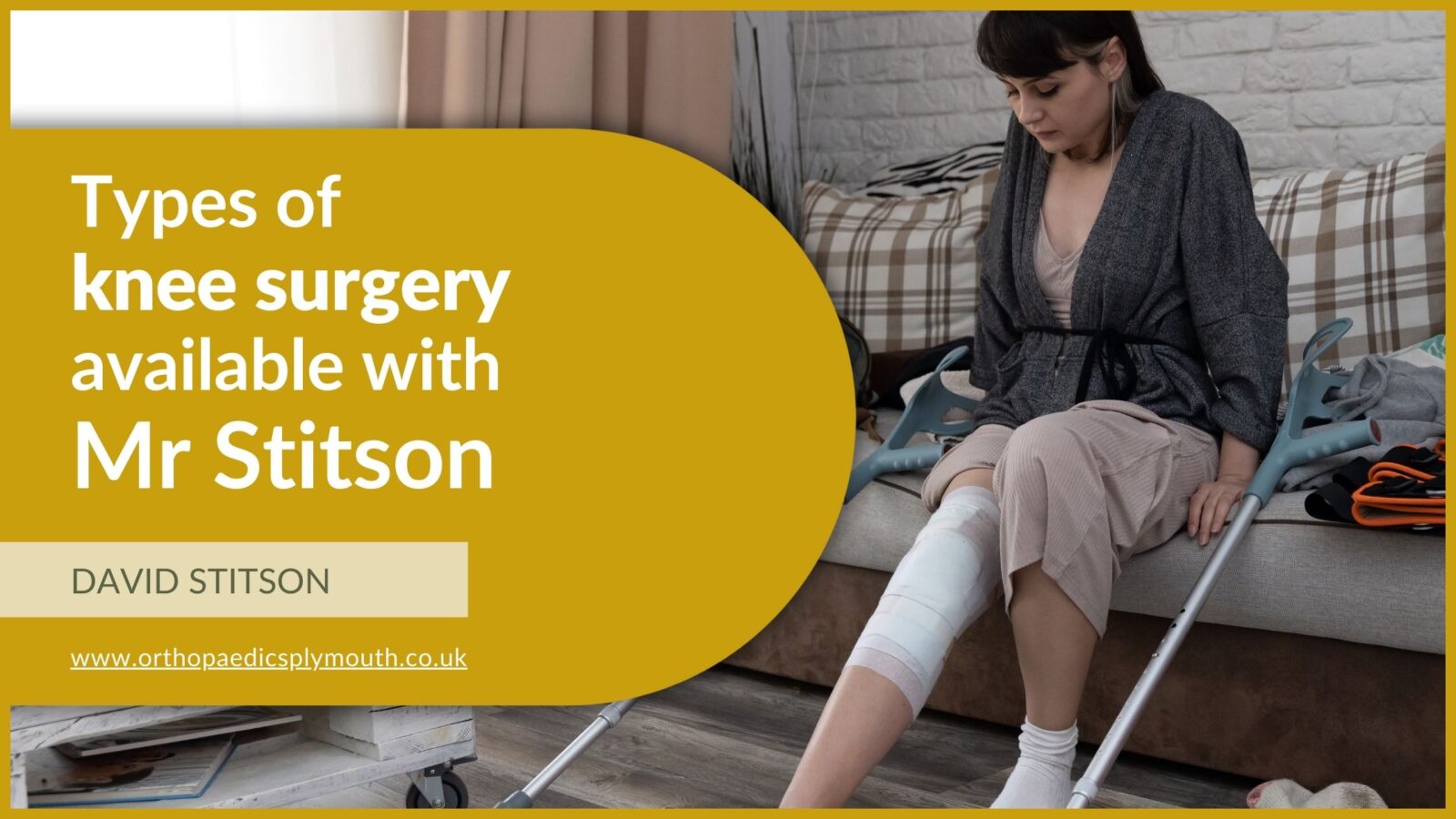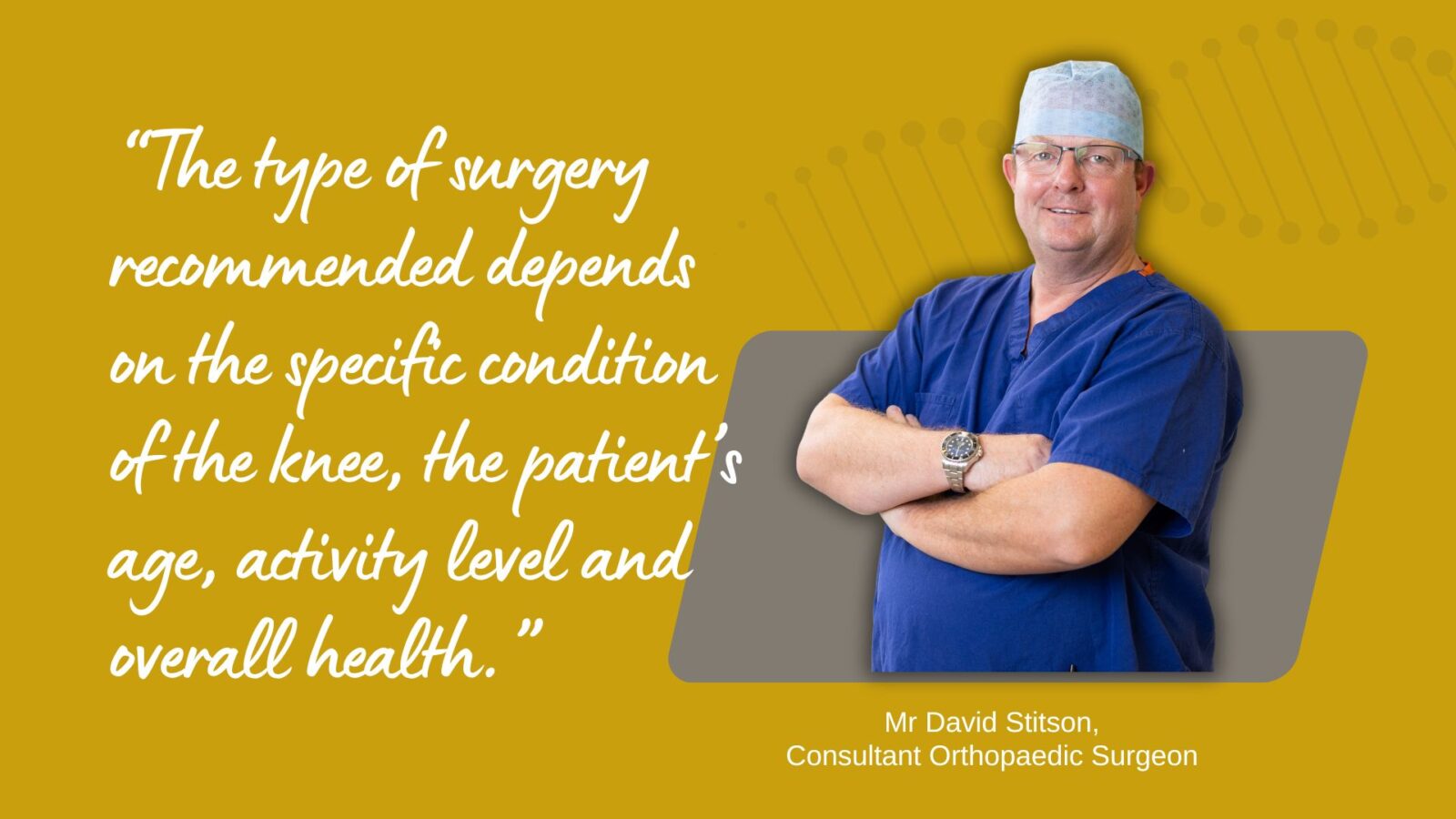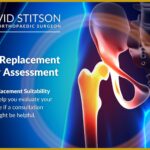Your breakdown of the types of knee surgery available with Mr Stitson
Knee surgery becomes necessary when non-surgical treatments fail to alleviate symptoms or when the structural damage to the knee is so severe that surgery is the most effective way to restore function and reduce pain.
Contents
ToggleHere is a breakdown of when knee surgery might be recommended and the types of knee surgery available:
When is Knee Surgery Necessary?
Severe Pain and Disability:
- Persistent Pain:
If knee pain is severe and persists despite treatments like physiotherapy, medications and injections, surgery might be considered. - Impact on Daily Activities:
When pain and stiffness significantly limit your ability to perform everyday activities like walking, climbing stairs or getting out of a chair.
Structural Damage:
- Ligament Injuries:
Torn ligaments, such as the anterior cruciate ligament (ACL), often require surgery, especially in active individuals or athletes who wish to return to sports. - Meniscal Tears:
Surgery may be necessary for meniscal tears that cause locking, persistent pain or instability in the knee. - Fractures:
Fractures around the knee joint that cannot be treated with casting or bracing might require surgical intervention.
Degenerative Conditions:
- Advanced Osteoarthritis:
When arthritis leads to significant joint damage, deformity and loss of cartilage and conservative treatments are ineffective, knee replacement surgery may be necessary. - Rheumatoid Arthritis:
In cases where rheumatoid arthritis causes severe joint damage, surgery might be recommended to reduce pain and improve joint function.
Mechanical Issues:
- Knee Instability: Chronic instability, where the knee frequently gives way, might indicate the need for surgery to stabilise the joint.
- Misalignment: Conditions like patellar tracking disorder or severe knee alignment issues (knock-knees or bow legs) that lead to pain and wear on the joint may require surgical correction.
Failure of Conservative Treatments:
- Exhaustion of Non-Surgical Options:
Surgery is often considered when non-surgical treatments, such as physiotherapy, weight management, medications, injections and lifestyle modifications have been tried and failed over an extended period.
Types of Knee Surgeries Performed by Mr Stitson
Arthroscopy:
- Procedure:
A minimally invasive surgery where a small telescope is attached to a camera (arthroscope) and instruments are inserted into the knee through small incisions. - Uses:
Commonly used to repair or excise meniscal tears, remove loose bodies, clean out damaged cartilage or treat ligament injuries. - Recovery:
Generally quicker recovery compared to open surgery, with less pain and low risk of complications.
Partial Knee Replacement (Uni-compartmental Knee Replacement):
- Procedure:
Replacement of only the damaged portion of the knee, preserving as much of the natural knee structure as possible. - Uses:
Suitable for patients with damage confined to one part of the knee, often due to arthritis. - Recovery:
Typically, slightly faster than total knee replacement, with a smaller incision and quicker return to normal activities.
Total Knee Replacement (TKR):
- Procedure:
The entire knee joint is replaced with an artificial joint made of metal and plastic components. - Uses:
Commonly recommended for patients with severe arthritis affecting more than one compartment of the knee joint, leading to pain, stiffness, and loss of function. - Recovery:
Longer recovery time, requiring several weeks to months of rehabilitation to regain strength and flexibility.
Ligament Reconstruction:
- Procedure:
Reconstruction of torn ligaments, such as the ACL, using grafts taken from the patient’s tissue or made from artificial materials. - Uses:
Common in athletes or active individuals with ligament tears that cause knee instability. - Recovery:
Requires several months of rehabilitation, with a gradual return to sports or physical activities.
It is essential to discuss all your options with Mr Stitson, who can guide you through the treatment process and advise on how you can achieve the best possible outcome.
When conservative treatments for knee pain are no longer effective
Knee surgery is generally considered when conservative treatments are no longer effective, and the patient’s quality of life is significantly impacted by pain, instability or loss of function.
The type of surgery recommended depends on the specific condition of the knee, the patient’s age, activity level and overall health. Consulting with a consultant orthopaedic surgeon such as Mr Stitson is crucial to determine the best surgical option and to understand the risks, benefits, and expected outcomes of the procedure.
About Knee Surgery
Knee replacement surgery replaces the worn out, painful and stiff knee joint with a new prosthetic joint. This procedure which may be a partial or a total replacement is normally performed under spinal anaesthesia and is usually followed by a night or two in the hospital. Day-case knee replacement surgery may be an appropriate option for you.

About Mr Stitson
David Stitson is a Plymouth-based Consultant Trauma and Orthopaedic Surgeon. Trained both in the UK and internationally, he has worked in medicine for more than 20 years for the NHS, for the Royal Air Force and in private practice. Mr Stitson operates privately at the Nuffield Health Hospital, Plymouth.

The Nuffield Plymouth CQC Rating
The Nuffield Hospital has a history that spans over half a century and has built a reputation for high standards of care, professionalism and expertise in delivering health services. They aim for continuous quality improvement in everything they do.
Active Quality and Governance programmes are in place at the Nuffield Hospital Plymouth. As part of this, the hospital is inspected by independent healthcare regulators to ensure it meets the fundamental standards of quality and safety as determined by the regulating body (CQC).
In the most recent inspection, Plymouth Nuffield Hospital was rated as ‘Good’ overall, however, the surgical element of the inspection was rated as ‘Outstanding’. The hospital was referred to as:
“Outstanding in effective and caring, and
Good in safe, responsive and well-led.”





